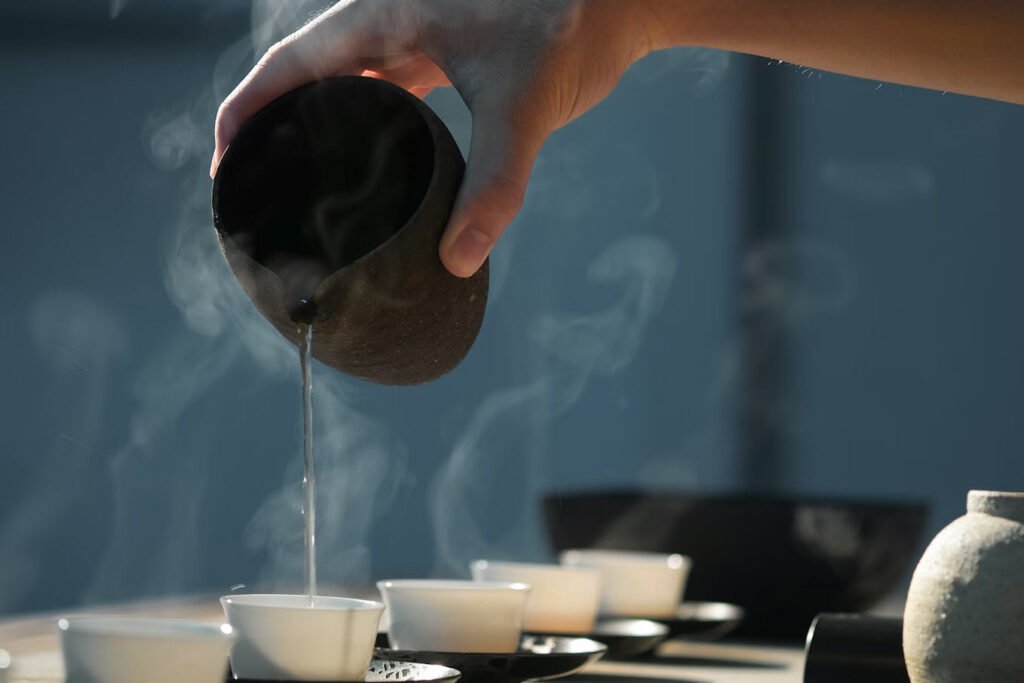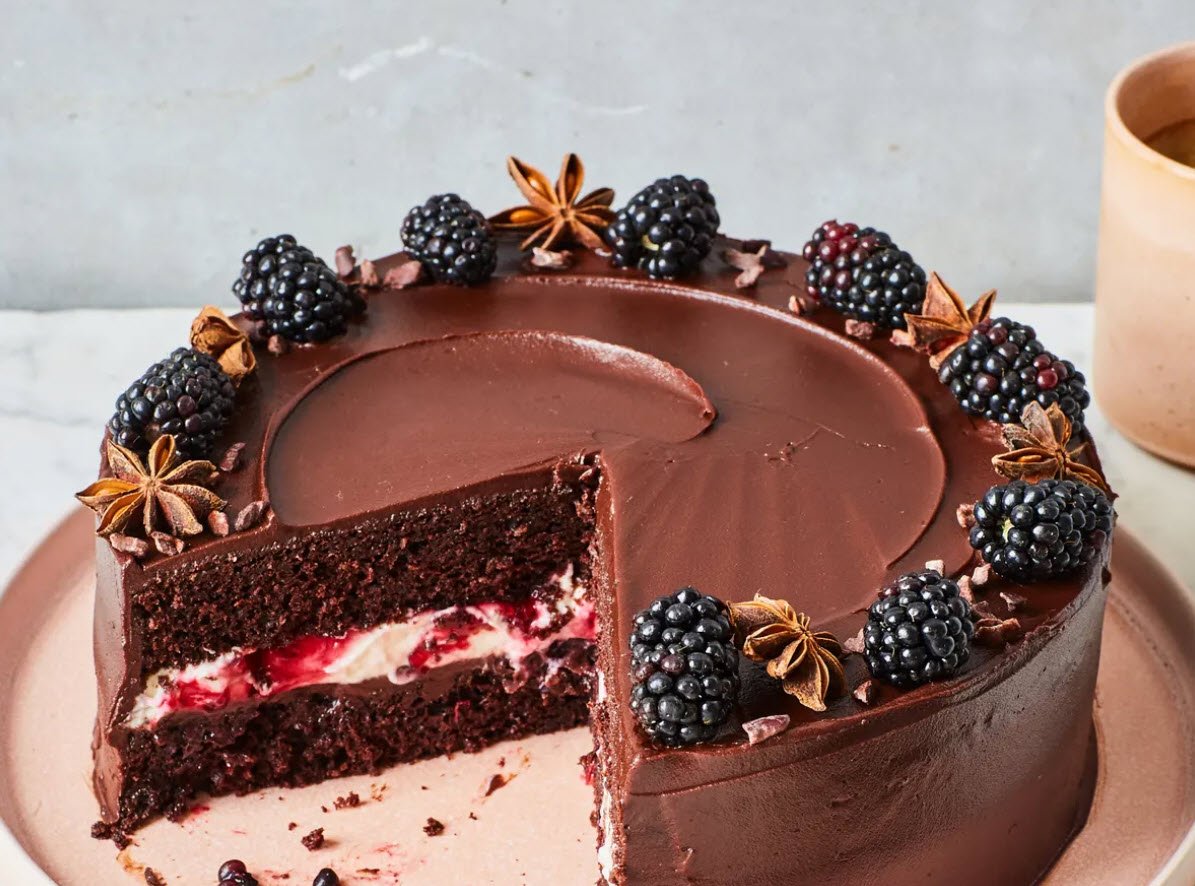
If you were to award one herb as having the most influence on humans, honors would undoubtedly go to the humble tea plant. This shrub has shaped entire cultures and inspired wars, and its leaves continue to make the most commonly drunk beverage in the world today.
The United States is the second-largest importer of tea, and more than half the U.S. population drinks it daily. For thousands of years, people have loved tea because it tastes good and has stimulating properties similar to those of coffee.
Today, more and more people are choosing to drink tea because of its highly popularized health benefits. But tea also offers us a benefit that doesn’t commonly make the headlines. Drinking tea can give us precious moments of relaxation and connection, which in our perpetually stressed-out culture can be the most important medicine of all.
| Scientific name: | Camellia sinensis |
| Family: | Theaceae |
| Parts used: | leaves |
| Energetics: | cooling, drying |
| Taste: | sour (astringent) |
| Plant properties: | stimulant, antioxidant, cardio protective |
| Plant uses: | energy, heart health, oral health, insulin resistance, type 2 diabetes Plant preparations: tea, culinary |
Tea leaves grow on a shrubby plant that is believed to have originated somewhere in Southeast Asia and western China. Because it has been cultivated for so many years, it is difficult to pinpoint the exact origin.
Some believe that, as with turmeric, there are no longer any wild plants and all existing plants are cultivated. Because humans have been interacting with the tea plant for thousands of years, the history of this plant is complex, fascinating, sometimes sordid, and a topic that fills entire books!
Types of Tea
All the different kinds of tea, including black, green, white, oolong, and pu-erh, come from the same plant, Camellia sinensis. Considering the difference in flavor and fragrance between black and green tea, the fact that these beverages come from the same plant is pretty amazing.
The area where the tea is grown, the way it is harvested, and the way it is processed and dried all play a role in the final product. One of the main differences among the different types of tea is oxidation. Black tea is highly oxidized, green tea is not oxidized, oolong is partially oxidized, and pu-erh is aged and fermented. Each of these processing methods gives us a dramatically different tea.
Medicinal Properties
Tea is high in antioxidants and flavonoids, namely catechins, and has been shown to be helpful for the heart, oral health, the skin, metabolic syndrome, and cancer. Drinking tea will support your health in many ways, but we invite you to regularly settle down into quality tea time rather than only quickly grabbing something on your way out the door. Doing so will support your emotional and spiritual health along with your physical health.
1) For Your Heart
There’s no doubt that regularly including tea among your daily beverages has a major benefit for your heart. Numerous studies have demonstrated tea’s ability to protect the heart in a variety of ways.
Tea can lower blood pressure and lower heart rate variability (a sign of heart disease). Drinking tea regularly has also been shown to lower lipid profiles and prevent oxidation of the arteries, thus preventing or reducing the progression of atherosclerosis. Regularly drinking tea reduces both C-reactive protein and platelet activation, both of which put stress on the heart.
2) For Insulin Resistance and Type-2 Diabetes
Tea has been studied extensively for its ability to positively affect metabolic syndrome and type 2 diabetes. In one placebo-controlled study, elderly patients were instructed to exercise for 30 minutes a day, 6 days a week, for 12 weeks.
At the end of the study, those who drank three cups of green tea each day had significantly more weight loss, as well as significant improvements in metabolic indicators such as fasting insulin and glucose levels.
Another clinical trial, this one involving obese patients with metabolic syndrome, measured the effects of drinking four cups of green tea daily. After eight weeks, those drinking the tea had significantly decreased body weight, biomarkers of oxidative stress, and cholesterol levels. The study concluded that the flavonoids in green tea offered multiple avenues of benefit for people with metabolic syndrome.
3) For Oral Health
Using tea for healthy teeth and gums might sound strange, but several clinical trials have shown some interesting ways that green tea can support oral health. In one study, patients using a green tea mouth rinse after wisdom tooth surgery had significantly less pain and took less analgesics than those using a placebo mouthwash.
Another study found that rinsing with a 2% green tea mixture for five minutes had a positive effect on dental plaque and was a cost-effective way to prevent dental cavities.
4) For Reducing Stress
We live in a chronically stressed culture. The majority of us are overworked whether through our job, our role in the home, or our responsibilities in the larger community. Our to-do lists flicker through our minds constantly while we run from one thing to the next.
Concerns about work, money, and health leave us in a constant state of worry, and this chronic stress is killing us. The negative effects of chronic stress play a role in our everyday happiness and are a contributing factor to many chronic illnesses. In fact, one study has linked stress to the six leading causes of death in the United States.
And in a poll conducted on behalf of the American Psychology Association, 77% of respondents said they regularly experienced physical symptoms caused by stress.
Chronic stress has become so ingrained in our culture that it is going to take a major societal shift to change it. In the meantime, you can make daily changes in your life to offset your cultural stress. We recommend starting with a regular tea break.
This isn’t an opportunity to fine-tune your to-do list or to further worry about your daily pressures. Instead, use it as a break from your worrying mind and as an opportunity for you to connect with yourself, to relax completely, or perhaps to connect meaningfully with someone else.
Recommended Amounts
While tea offers lots of health benefits, it is also caffeinated. The healthy amount that can be enjoyed in a day will vary from person to person as well as by the type of tea. While we offer a recommended amount, you will ultimately have to determine what works best for you.
- Does a cup of tea leave you jittery?
- Does drinking tea throughout the day make it hard for you to sleep at night?
All of these are signs that tea may not be working well for you. The therapeutic amount of tea is the following: As tea: 1 to 2 teaspoons brewed in 1 cup of water, 3 to 5 times per day.
Special Considerations
All tea contains caffeine, and those sensitive to caffeine may be overly stimulated by tea. Black tea contains the most caffeine, green tea the least. Most of the tea shipped to the United States, especially those in pre-made bags and drinks, is of the poorest quality.
Low-quality tea has been found to have high concentrations of toxins like fluoride and heavy metals. Buy organic, loose-leaf tea to get the most benefits for your health. A lot of tea is hand harvested, and much of it may be processed by hand too. Look for fair trade tea to ensure that the people involved in the harvesting and processing of your tea were paid a decent wage and treated with respect.
[1] Make Your Own Earl Grey Tea
Earl Grey tea is black tea that has been flavored with the citrus fruit bergamot (Citrus bergamia), which comes to us from Italy and other Mediterranean areas. Originally the tea may have been mixed with the actual bergamot peels, but these days it is usually made with essential oil.

You can easily make your own tea blend at home, so you can control the strength of flavor. Use less essential oil for a subtler effect, more oil for a stronger effect. The cornflower (Centaurea cyanus) doesn’t add much flavor, but makes a beautiful blend; it can be omitted if you can’t easily find it.
Yield: 1¼ cups loose-leaf tea, approximately 30 to 60 servings
- 10 to 15 drops bergamot essential oil
- 1 cup loose-leaf black tea (I like Assam)
- ¼ cup dried orange peel* (20 grams)
- 2 tablespoons dried cornflowers (optional)
- 1 vanilla bean, minced finely cream, to taste (optional) honey, to taste (optional)
Directions:
- Pour the bergamot essential oil into a 1-pint glass jar. Put a lid on the jar and shake well to distribute the essential oil all over the inside.
- Add the tea leaves. Cover and shake well for about 30 seconds. Then add the rest of the ingredients and shake well.
- This tea blend can be made into tea immediately, but I like to let mine cure for a couple of days to allow the flavors to combine. Store in a cool, dark place and use within 6 months.
- To brew your Earl Grey: Bring 1¼ cups water to a boil. Place 1 to 2 teaspoons of the tea blend into a tea mug or large tea infuser.
- Avoid cramming the herbs into a small tea infuser; it’s better for them to have room to expand and move around.
- Cover your tea with just-boiled water. Let steep, covered, for 3 to 5 minutes. Strain.
- Enjoy immediately with cream and honey to taste.
*Store-bought dried orange peel comes in small, uniform pieces. If you make your own, be sure to mince the orange peels finely before drying them, as they are difficult to cut once dried.
[2] A Tea Break With Oolong
You could take all the herbs and spices in the world for your health, but if you never take a moment to yourself, your efforts will be in vain. This recipe isn’t just about the tea; it’s also about taking time to rest and to be with yourself.

Yield: variable oolong tea leaves
- Bring water to a boil. Let the water sit for a minute or two.
- Place loose-leaf oolong tea into a small cup. Use enough tea to loosely cover the bottom of the cup.
- Pour the hot water over the tea to fill the cup. Let steep. Eventually the leaves will sink to the bottom of the cup.
- Put away your to-do lists and worries of the day. Find a quiet spot and enjoy your oolong tea.
- Tomato Beef – A Symphony of Flavors in Every Bite
- Star Anise Chocolate Cake – A Decadent Dessert
- Zucchini Noodles with Spinach Pesto – A Heart-Healthy Twist
- Fruit Steel-Cut Oats – A Nutritious and Delicious Breakfast
- Rice & Mango Breakfast – A Quick and Nutritious Start to Your Day
- Heart-Healthy Tuna Salad Delight
- Elegant Tea Party Peach Melba Cakes – A Delightful Indulgence
- Biscuits with Bacon Gravy – A Comforting Delight
- Oatmeal Nuggets – A Bite-sized Delight for Any Occasion
- Nutty Waffles – A Crunchy Twist to Breakfast








